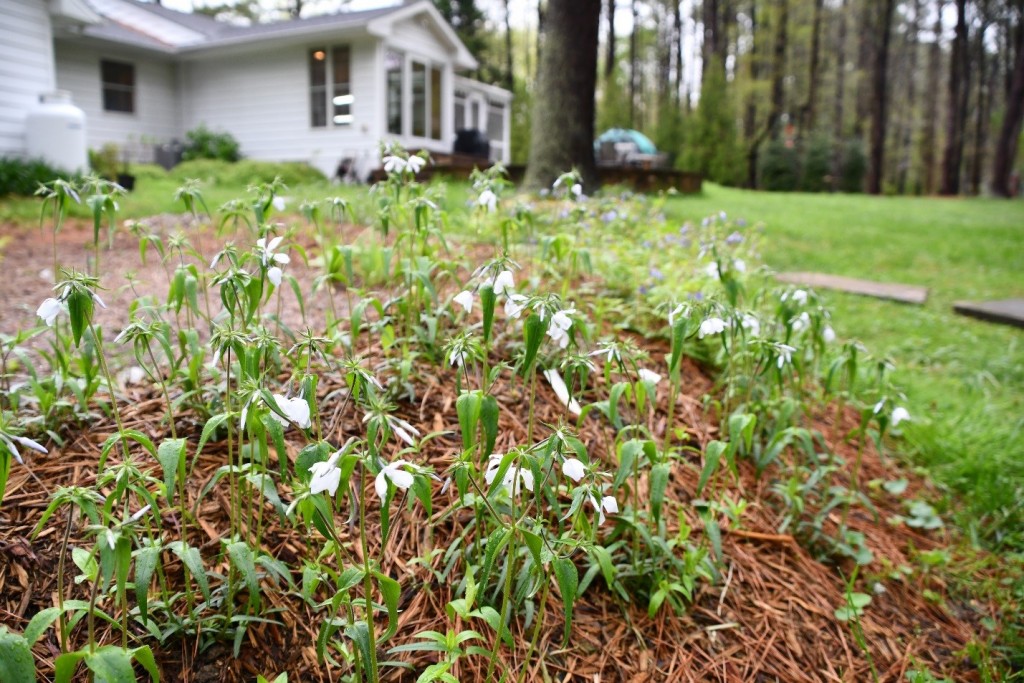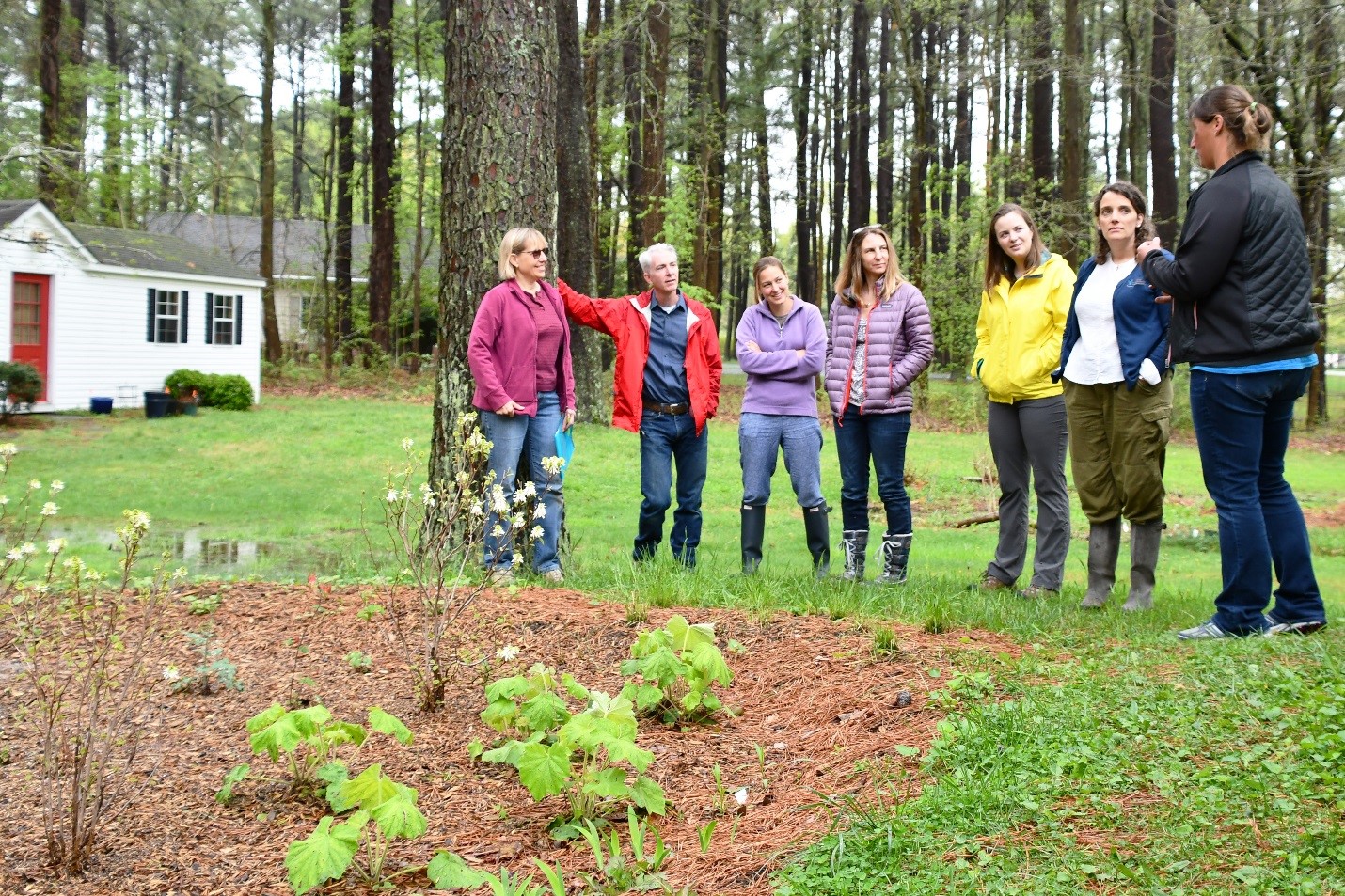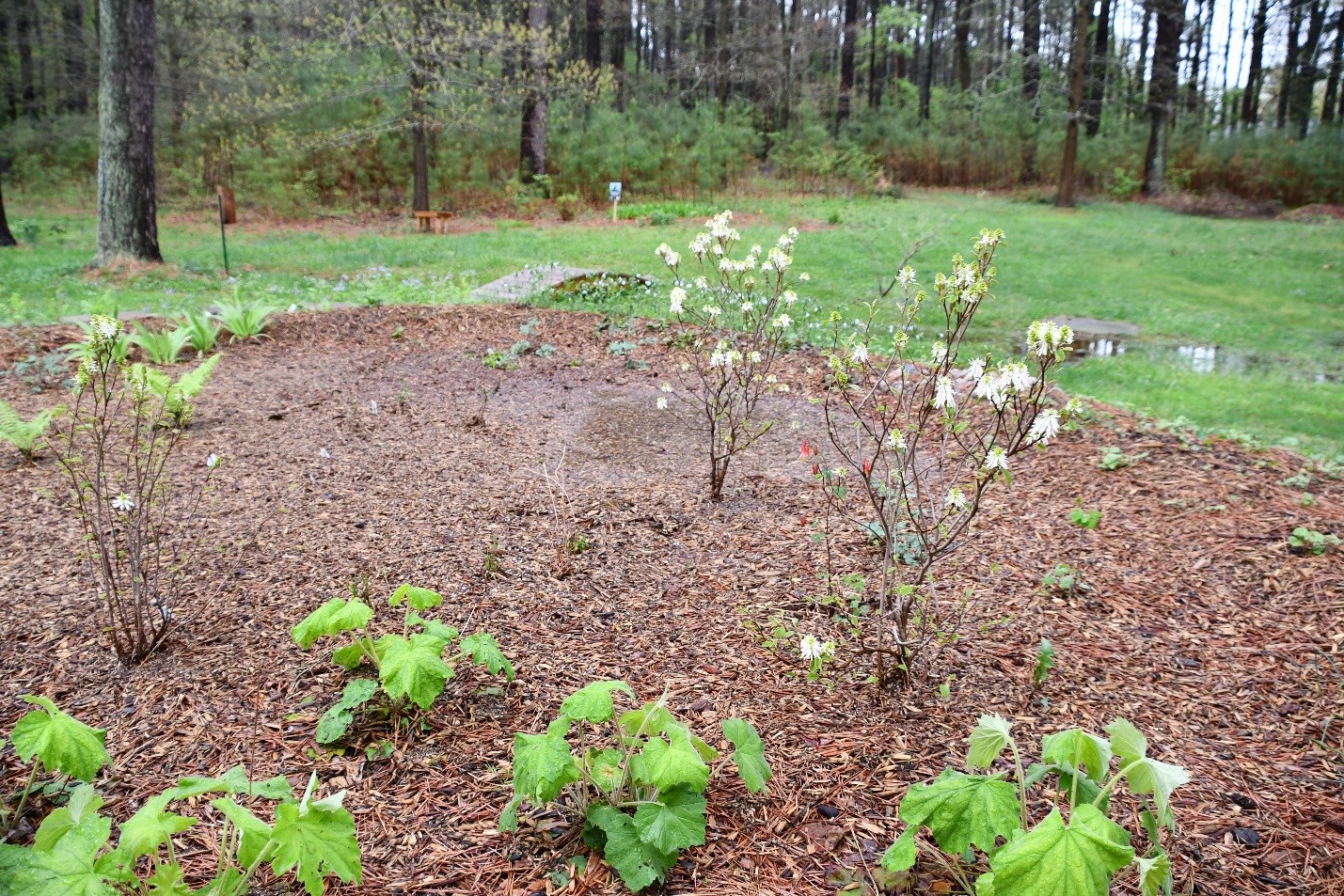
Watershed Residents’ Rain Gardens Help the Choptank
When better to see a rain garden in action than just after a solid rainfall? This spring, a group from NOAA did just that!
A rain garden is a designed area usually depressed a bit into the ground that allows rainwater runoff to collect there—rather than quickly washing over impervious surfaces, through storm drains, and into nearby streams and creeks. This runoff can carry excess nitrogen, phosphorous, and sediment into the water, which can harm water quality, fuel algae blooms, and damage oyster reefs. Water that collects in a rain garden slowly soaks into the ground instead. Rain gardens usually are planted with wetland and other plants that help soak up the collected rainfall—and look nice, too!

When they moved to Easton, Maryland, homeowners Janet and Ron noticed that water flowed quickly over their land into a stream and into a creek off the Tred Avon River. They had heard about rain gardens, and thought their property might be a good match for one, but didn’t know how to go about creating that space in their yard.
Thanks in part to the Choptank Habitat Focus Area, they got the advice and financial support they needed to make it happen. Funding from the National Fish and Wildlife Foundation enabled the Eastern Shore Land Conservancy—a partner in the Choptank HFA’s “Envision the Choptank” community engagement effort—to hire a landowner assistance coordinator.
In her role as that coordinator, Nicole Barth helps connect property owners with the information they need to manage stormwater on their properties. For Janet and Ron, that meant that last year Nicole helped them find and then work with a contractor specializing in rain gardens to construct one in their yard.
The new rain garden is located behind their home. In addition to the rain garden, they use rain barrels to collect stormwater that falls from their home’s rooftop and runs down through gutters and downspouts; that rainwater can be saved to water plants during drier spells.

Janet is also converting a section of their yard into a woodland garden, replacing a grass lawn area—that used to need frequent mowing—into a garden featuring lovely native plants.
The Choptank HFA is home to many people who treasure their rivers, creeks, and streams—and the species who live in them. Thanks to partnerships enabled through the Envision the Choptank community engagement effort, more residents have access to information they can use to help the health of their river.
